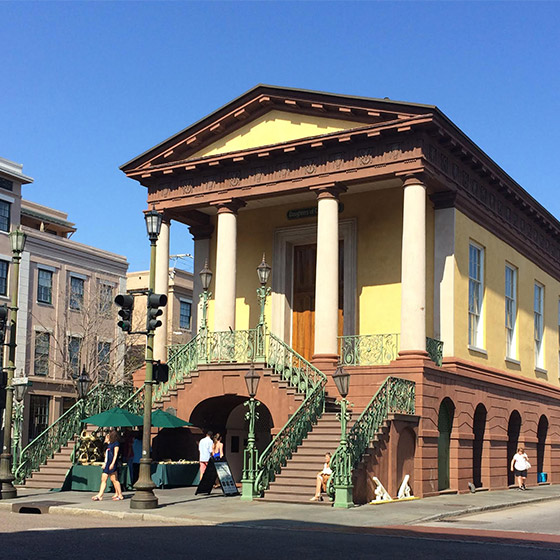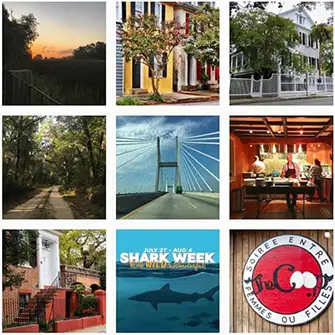
The Charleston Market
The Charleston Market (or just the Market as locals call it) has been integral to Charleston since a public market was planned at this site around 1788. A beef market was originally located at the northeast corner of Broad and Meeting Streets, but later burned. In 1788, the Pinckney family deeded the land on which the Market now exists to the City of Charles Town specifically to be developed as a public market. The Pinckneys were farsighted about the use and future of this property; the deed even had language that is known today as a reverter clause, i.e. if the City ever chose not to use the land as a market, the land would revert back to the Pinckney family and heirs.
As a tour guide, I am frequently asked if the Market is where slave auctions were held. To be clear, slaves were never sold at the Market. In the early years of Charles Town, slaves were sold on the docks. Later, after the Old Exchange Building was completed, slaves were sometimes sold on land to the north of that building. On completion of the Old Slave Mart on Chalmers Street in 1859, slaves were auctioned there.
The Market begins at Meeting Street with historic Market Hall, designed by architect Edward B. White and completed in 1841. The Market extends to East Bay Street, with South Market and North Market Streets on either side. The Market “sheds” run from the back of Market Hall (with a few open-air vendors located under Market hall) to East Bay, and a few sheds near Meeting Street are enclosed with retail shops. The remaining sheds stretching to East Bay Street are open-air and rented to retail vendors selling souvenirs, leather goods and jewelry. You’ll also find “Sweetgrass Basket Ladies” weaving and selling their baskets in between sheds.
The first sheds were located at the beginning of the Market at Meeting Street and sold meat. In fact, buzzards kept the Market clean by eating scraps. These birds, known as “Charleston Eagles,” were even protected by law. Later, produce and other goods were sold as the Market expanded.
Today, North Market and South Market Streets are also filled with shops and restaurants. Some restaurants post their menus so that they are visible from the sidewalk. Many of the carriage tours leave from North Market Street or the surrounding area where the carriage companies are located.
I personally love the hustle and bustle of the Market and frequently find myself there in between tours. Traffic is usually heavy in the Market area, and parking can be difficult to find. I suggest leaving your car at the Visitor Center parking garage and taking the Dash Shuttle on John Street outside the Visitor Center. The Dash 211 will take you to King Street, Meeting Street and the Market area. I am one of the Dash Shuttle’s best customers and can attest that the Dash is the best deal in town (it’s free)!
As one of the most popular, accessible, family-friendly and free (except for your purchases) attractions in Charleston, the Market is a hub of activity. A visit to Charleston is incomplete without experiencing the Charleston Market!



